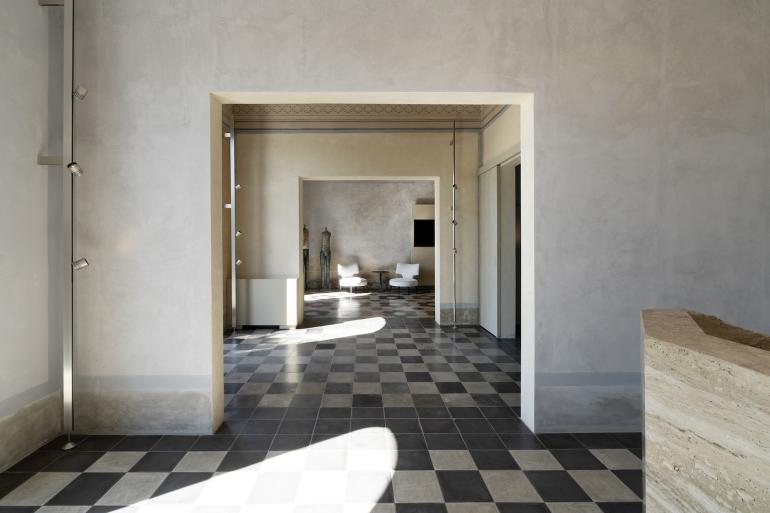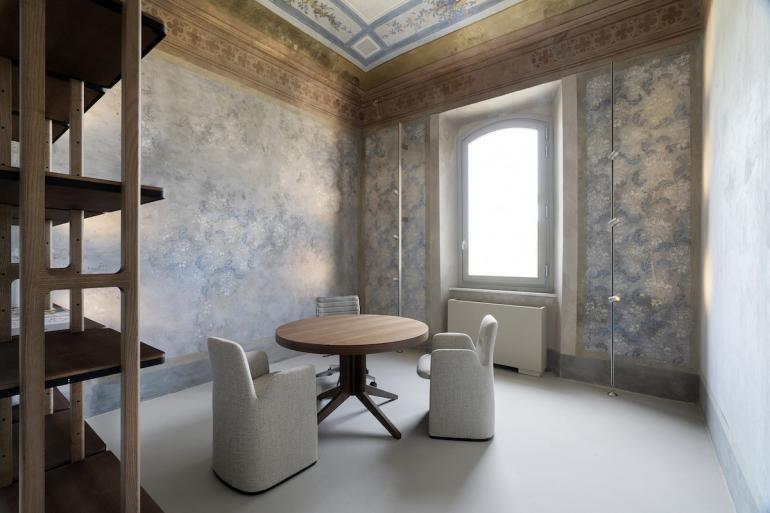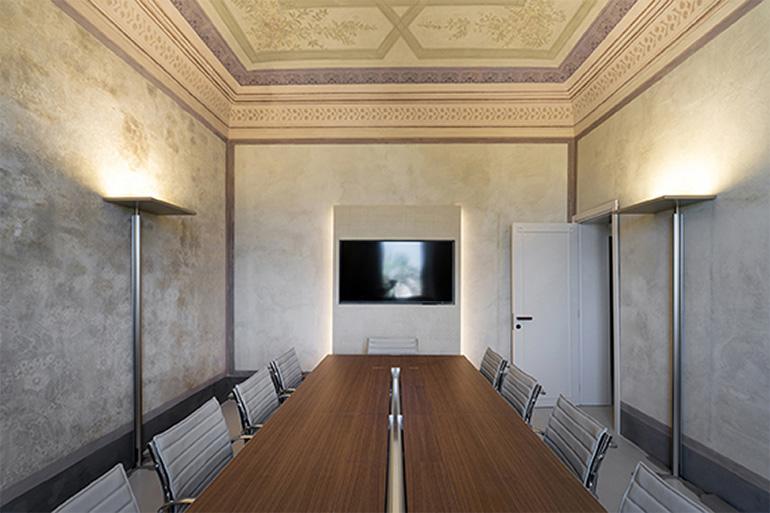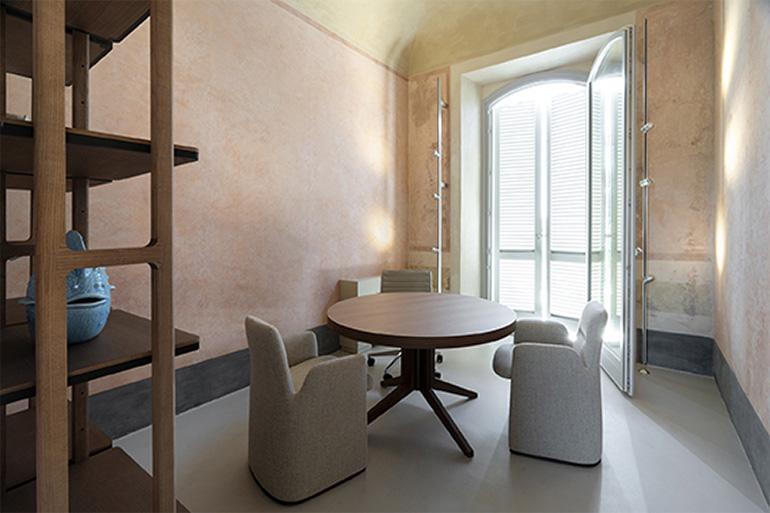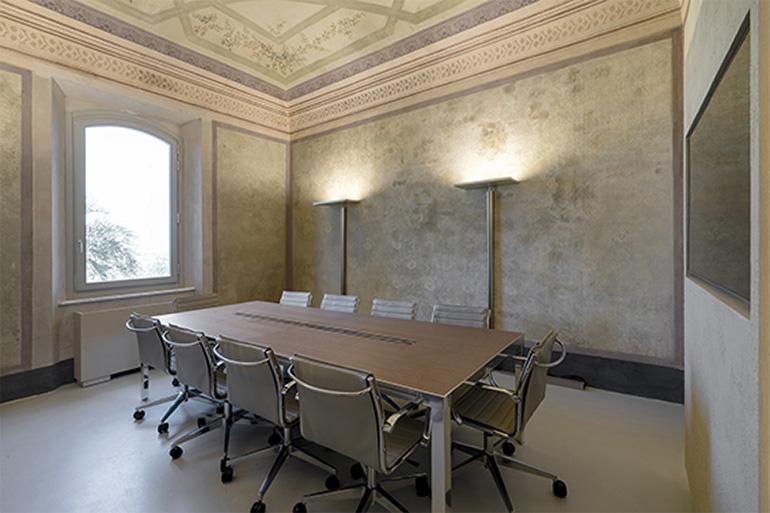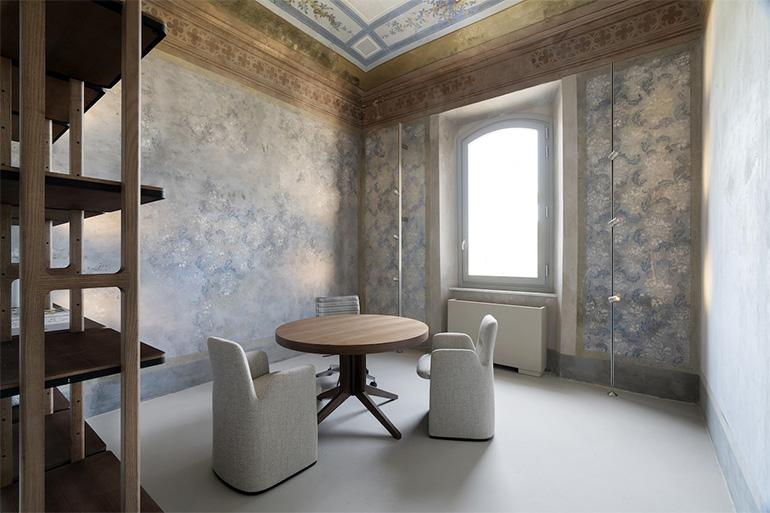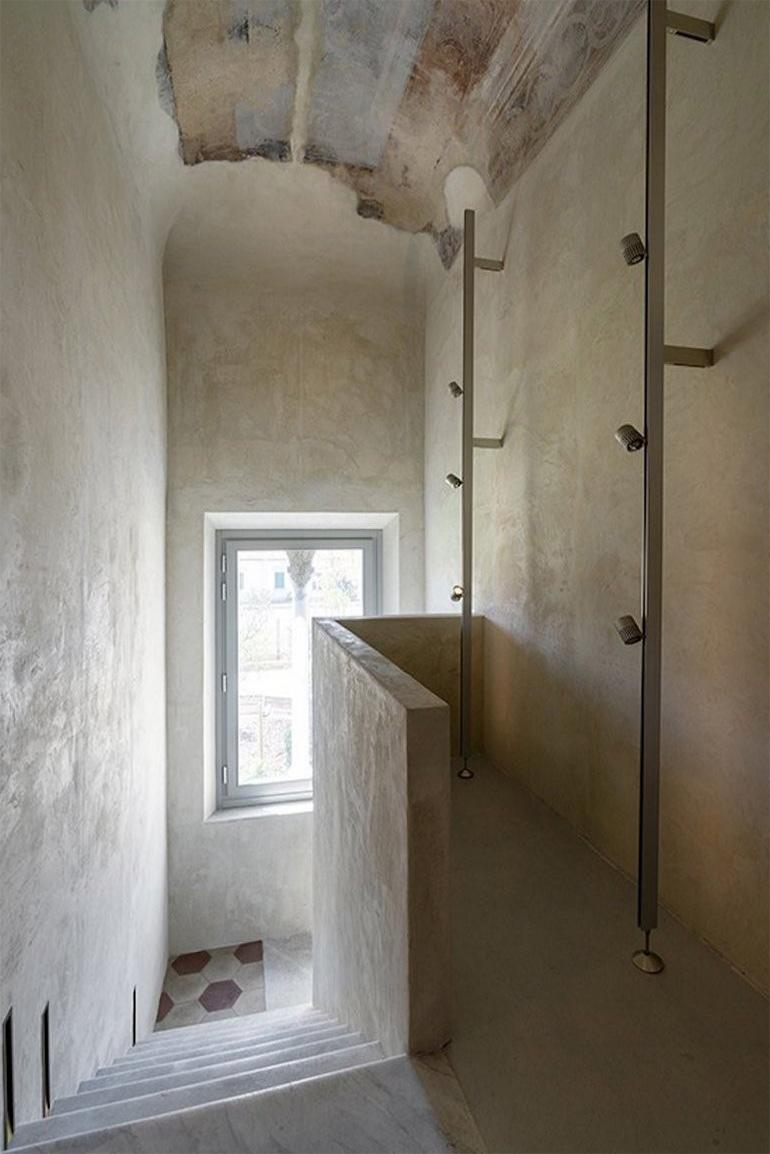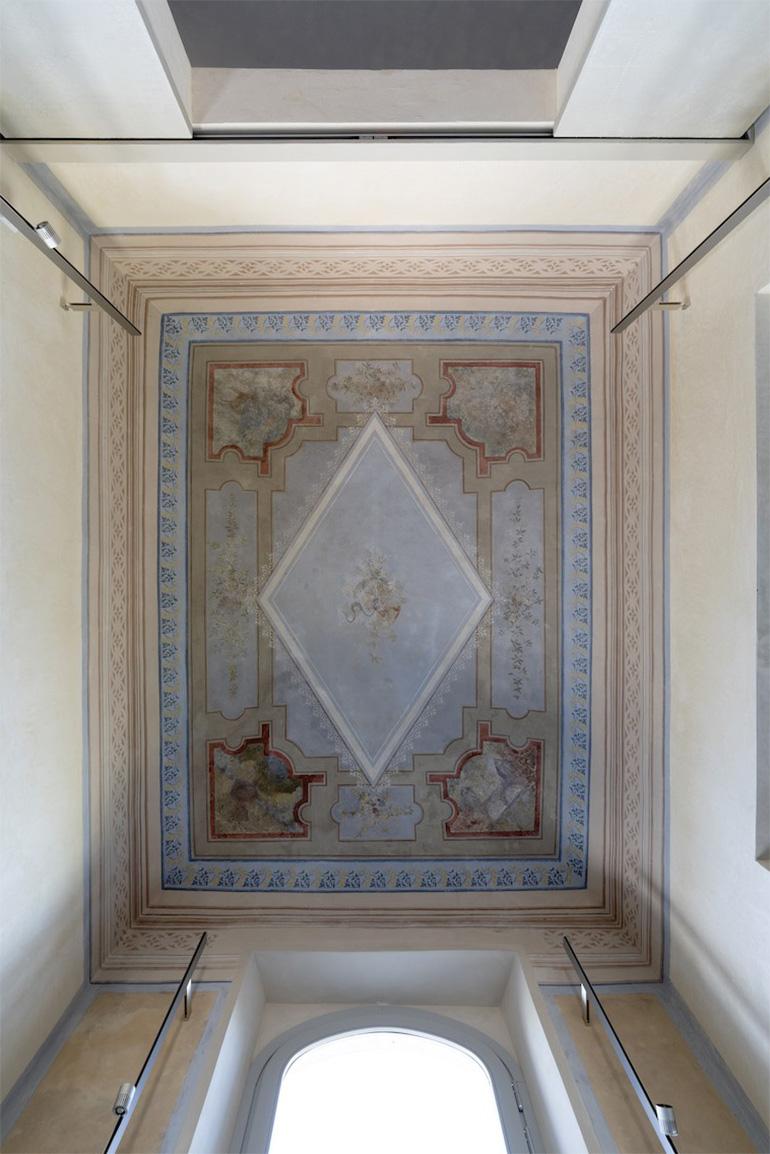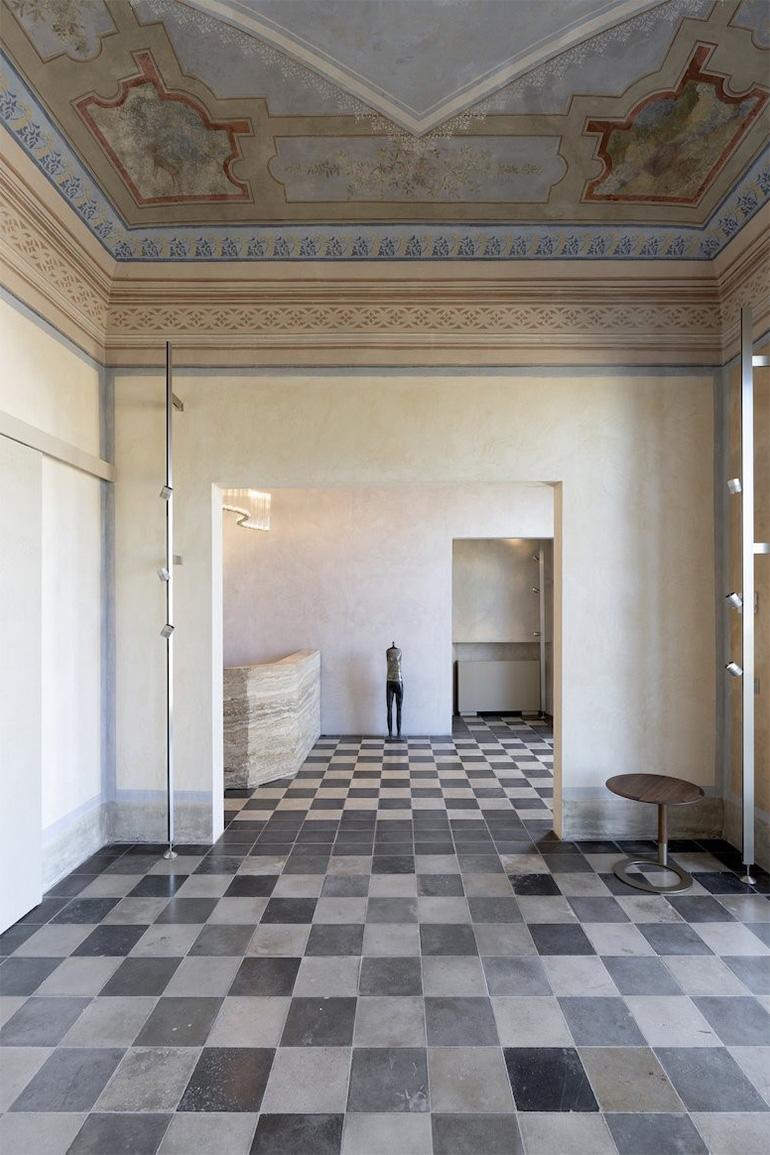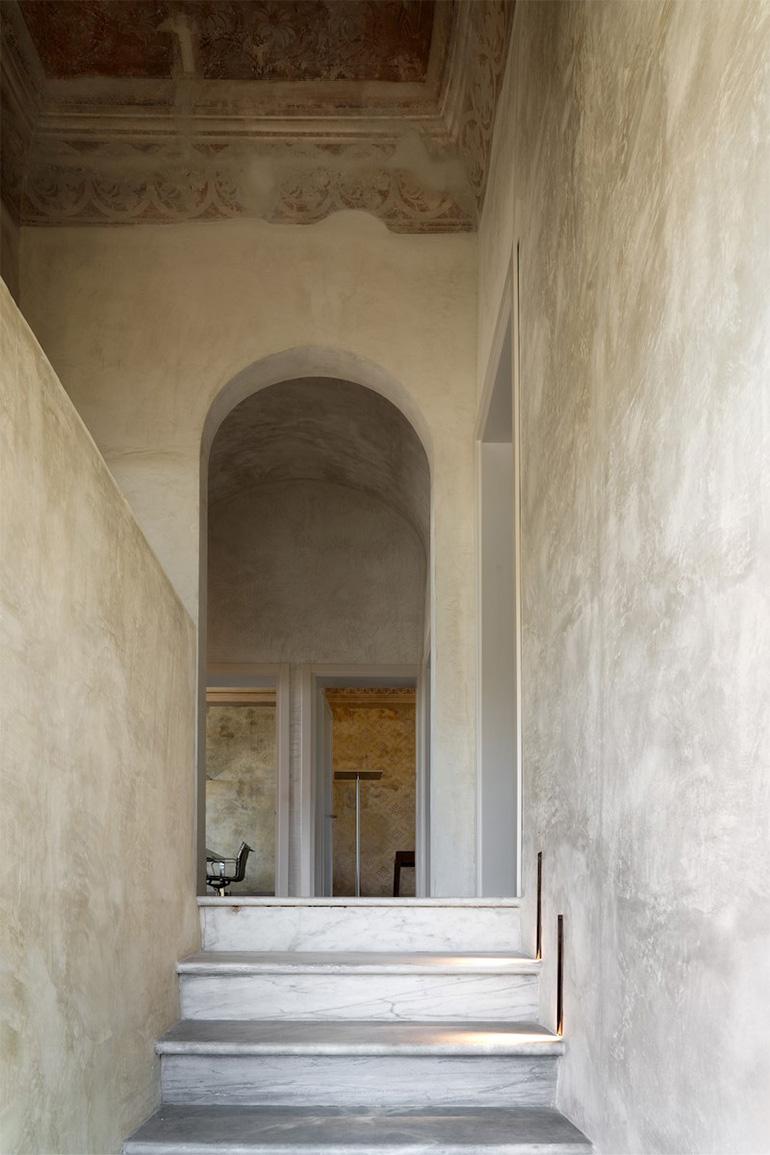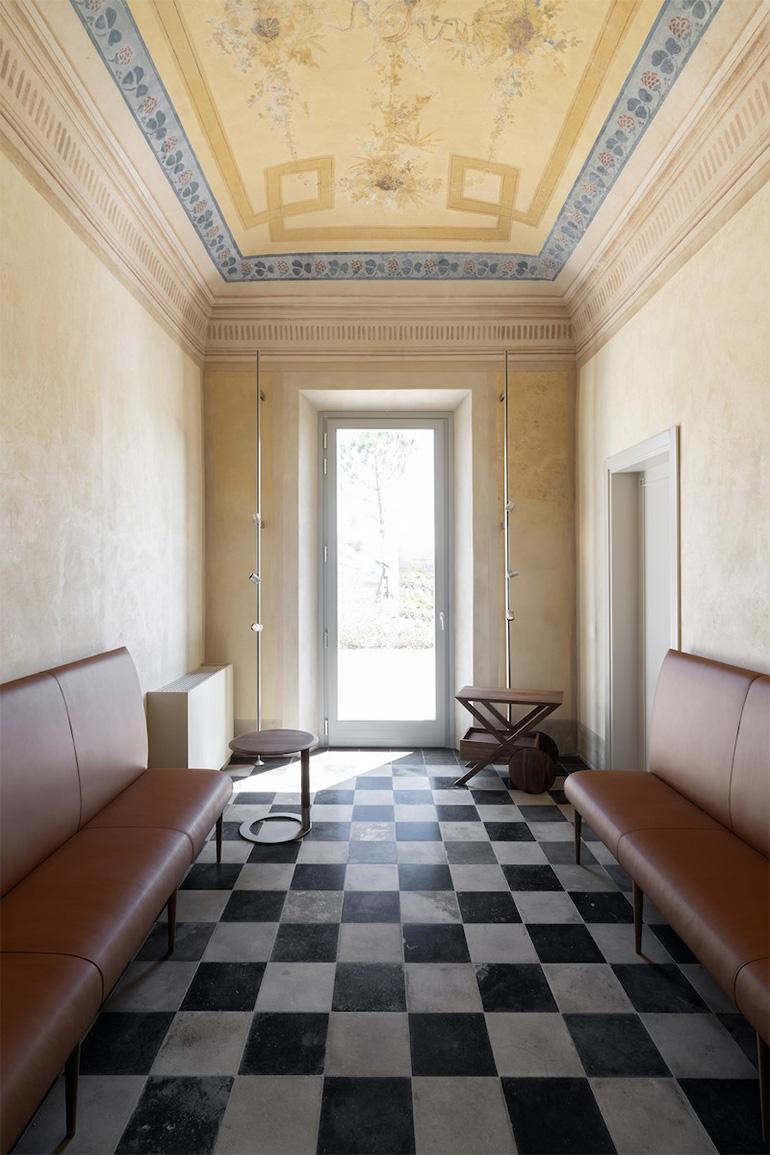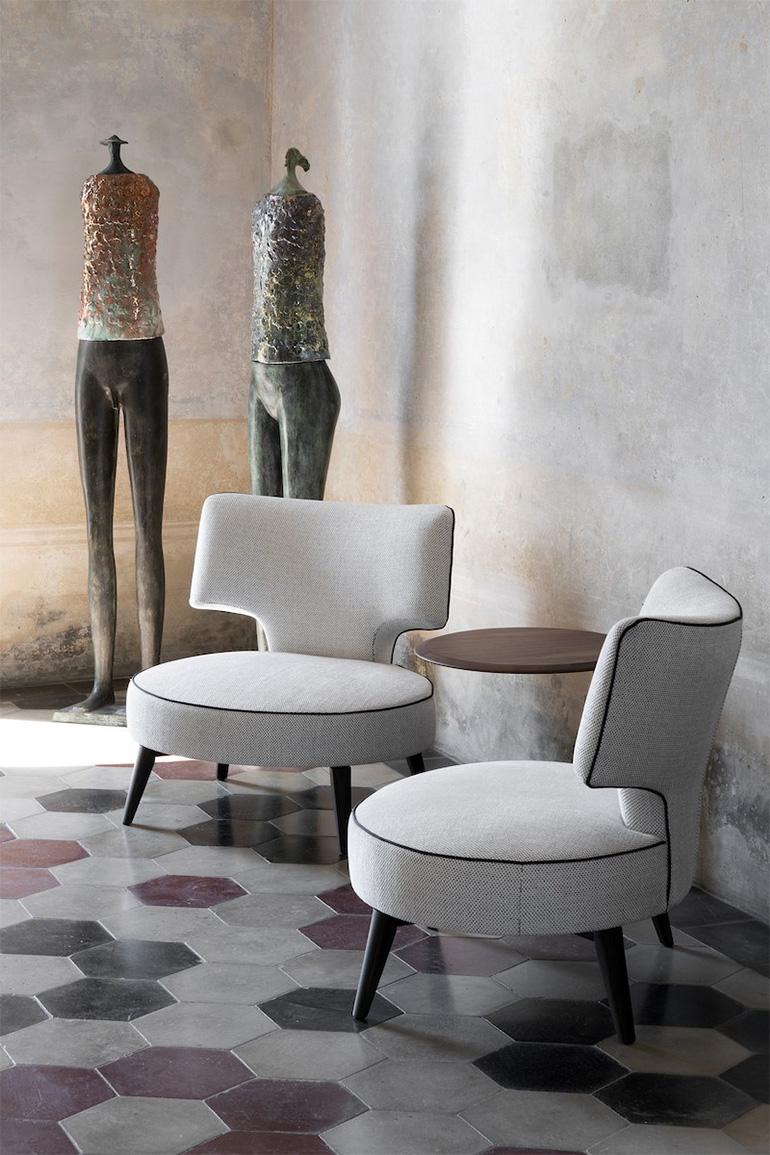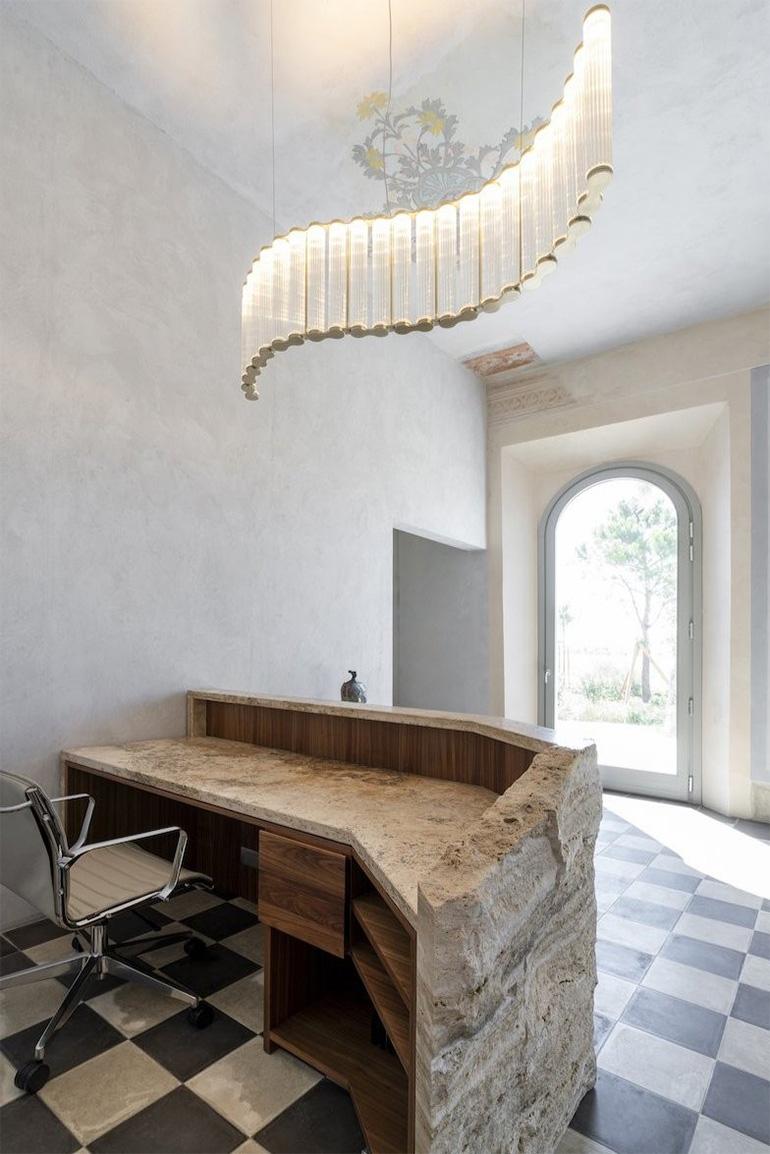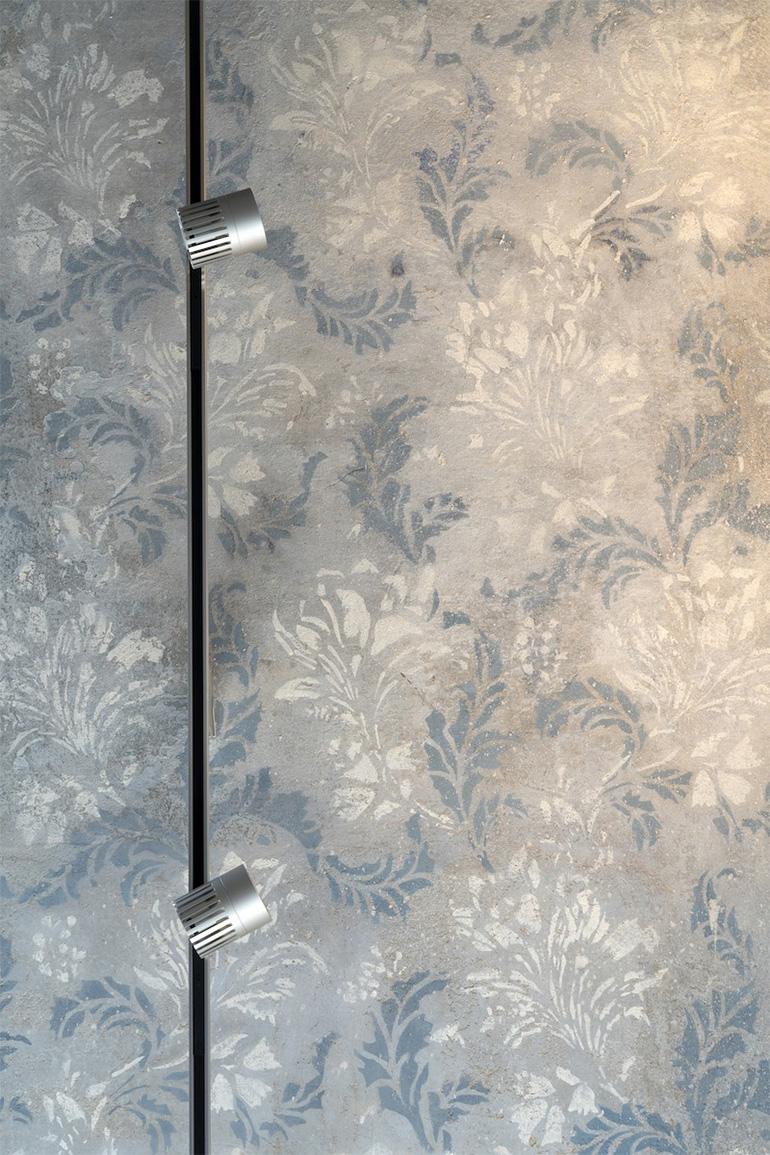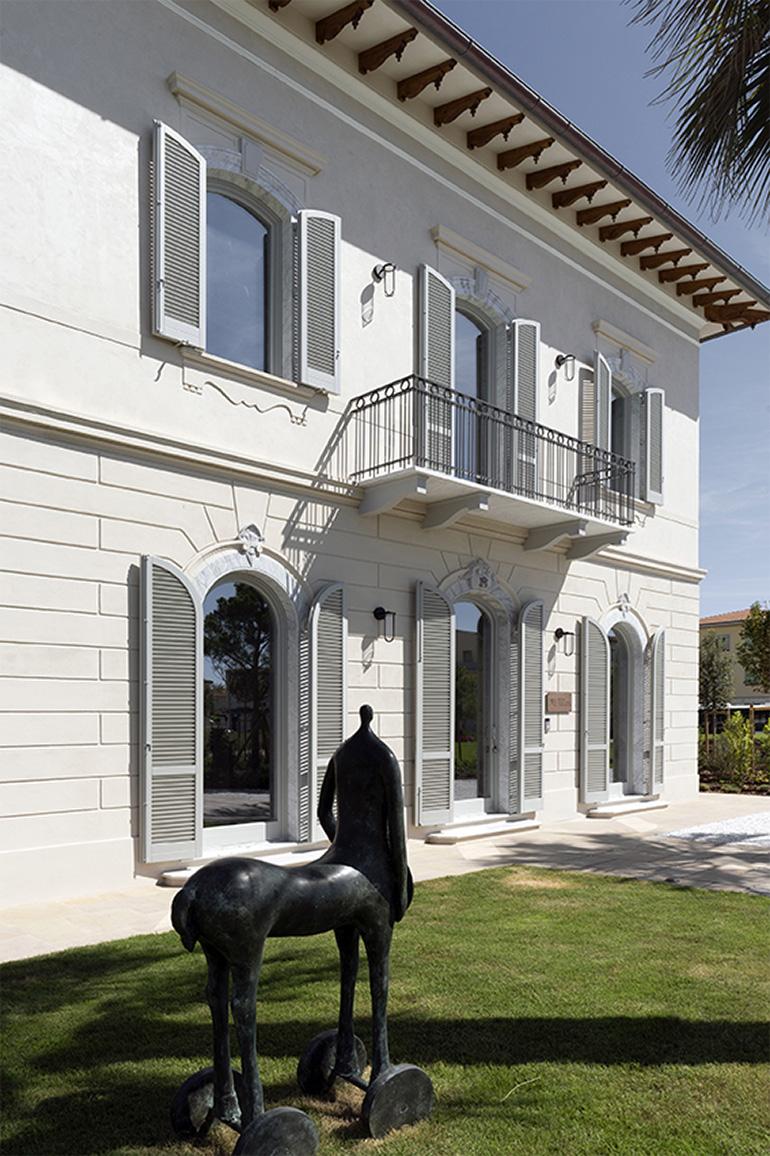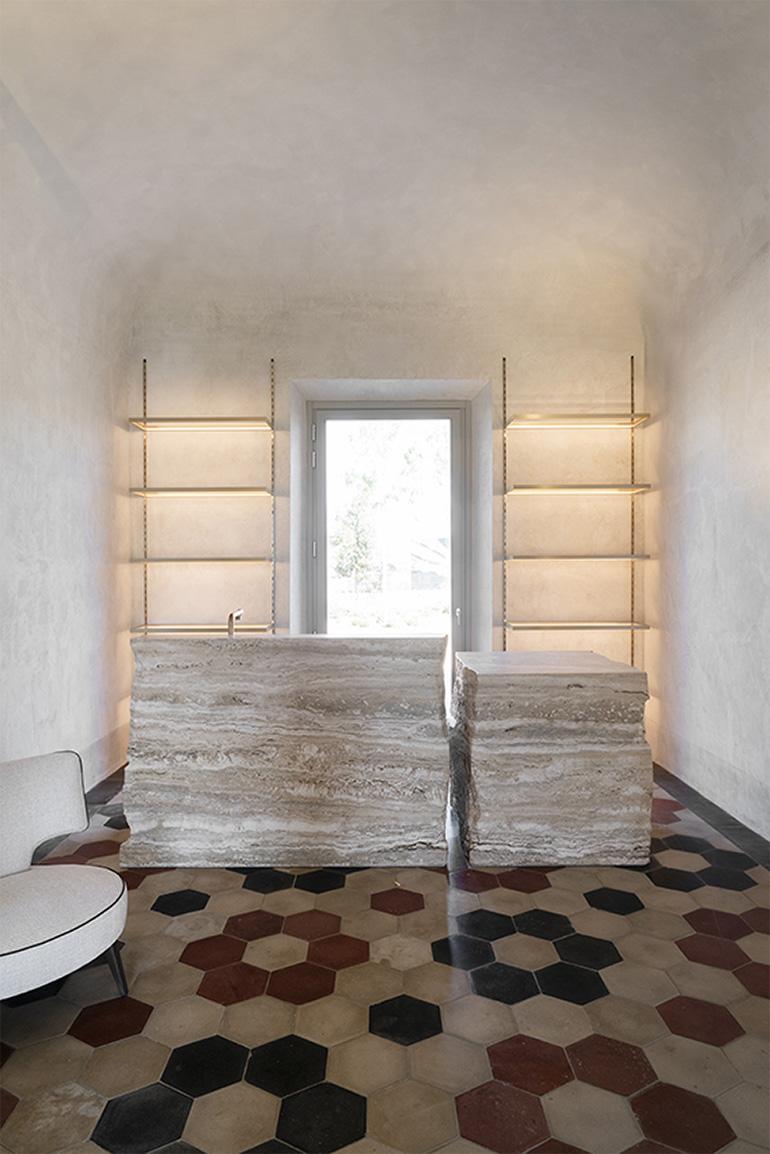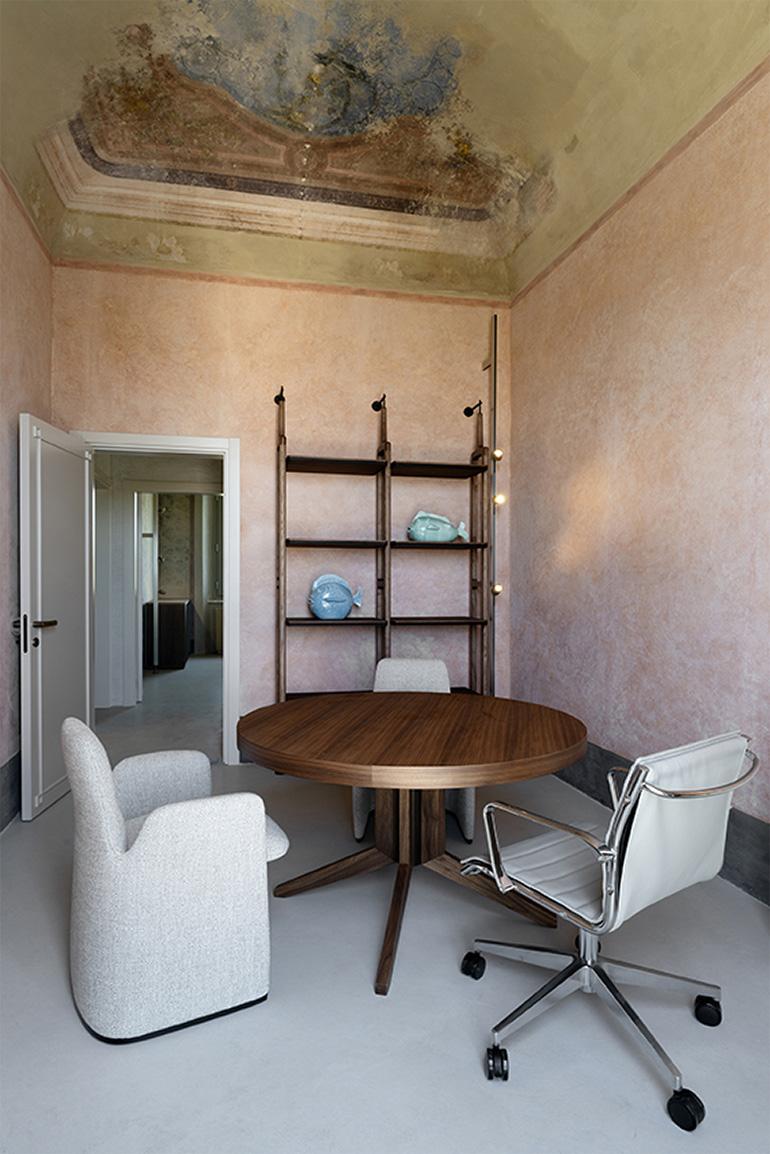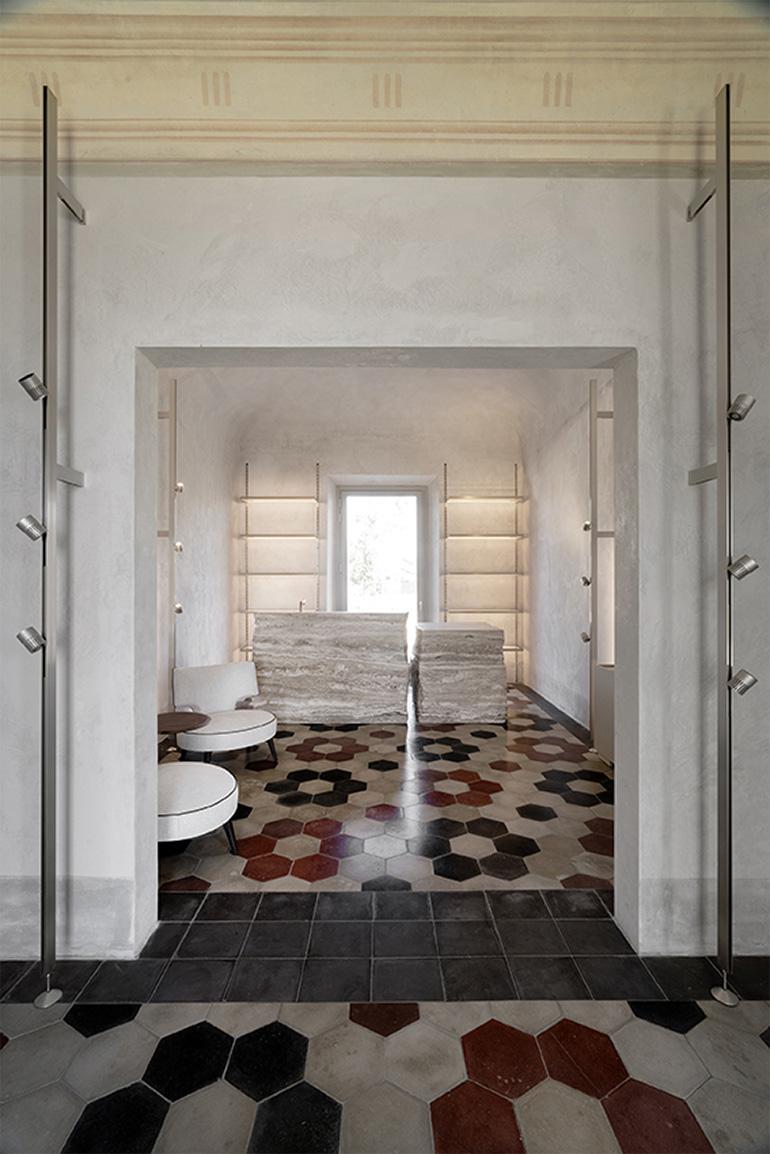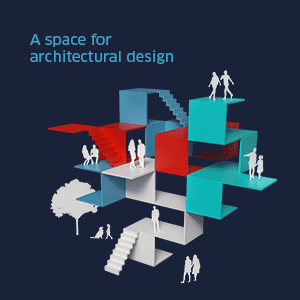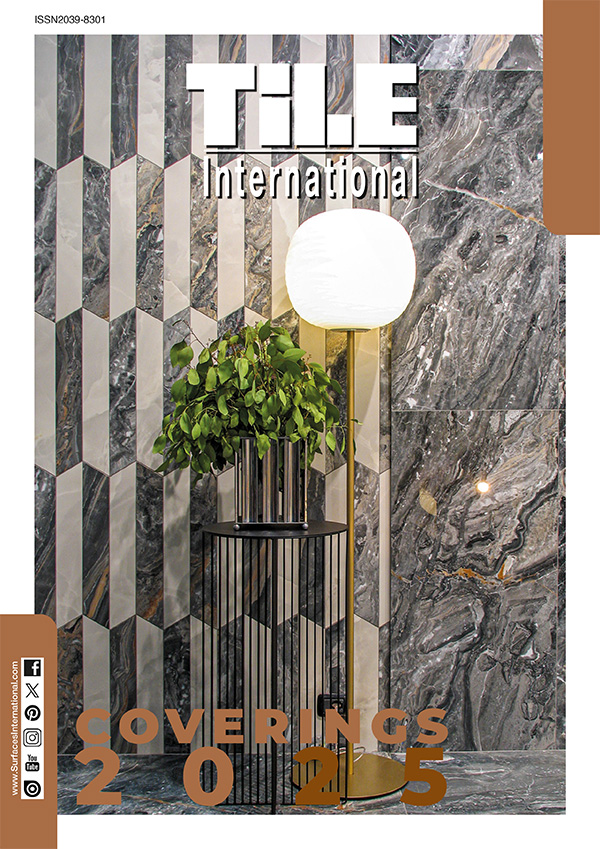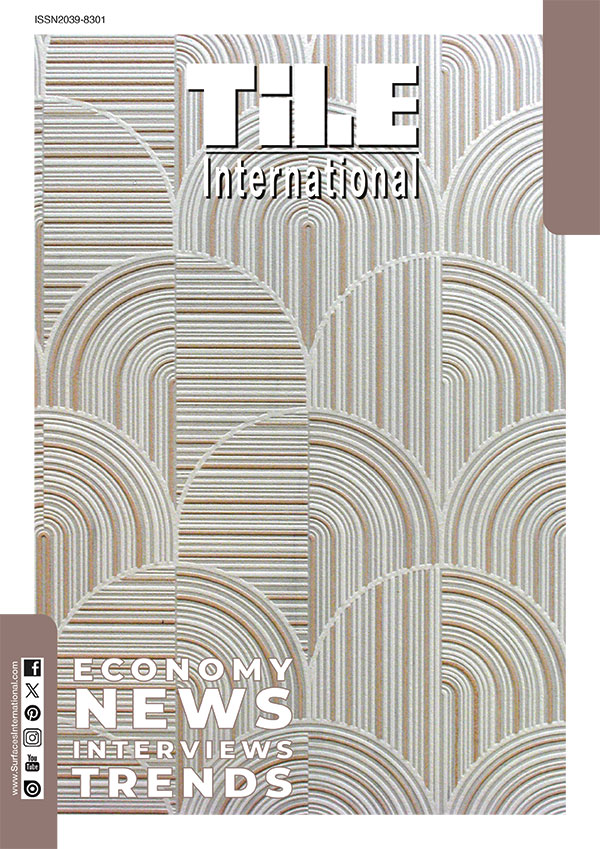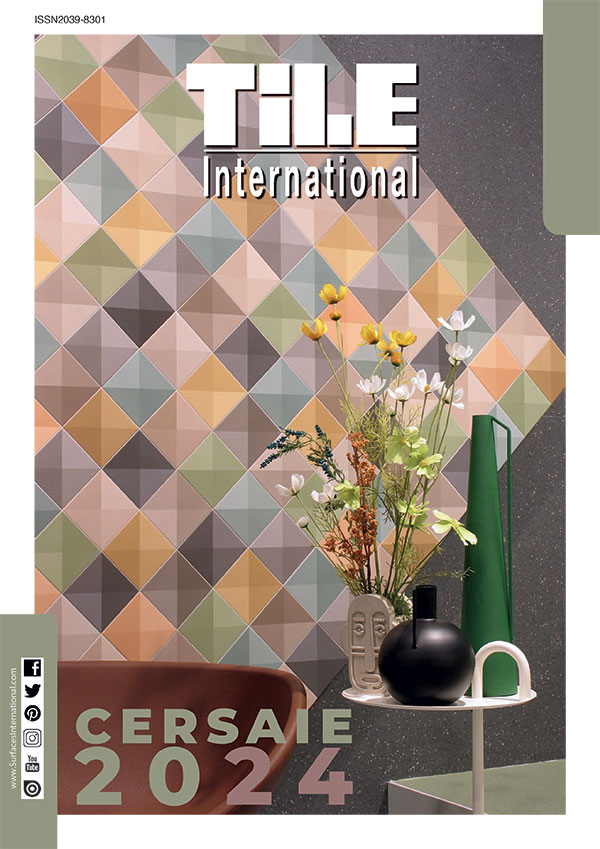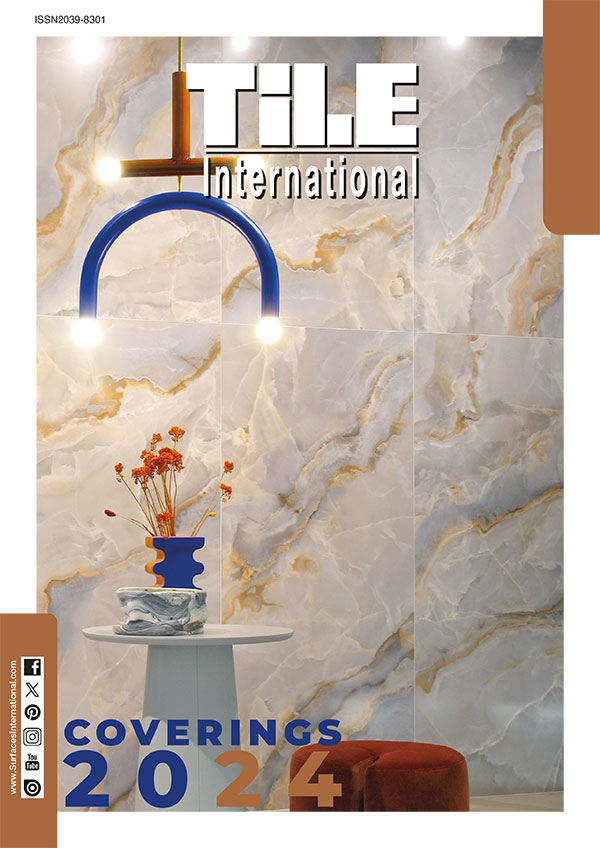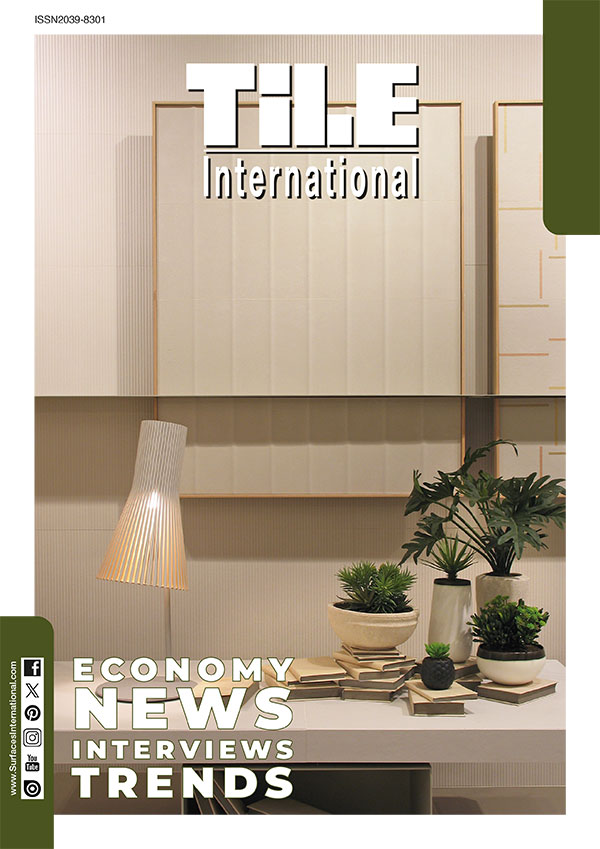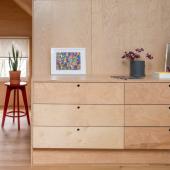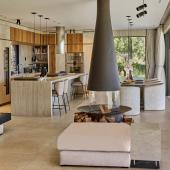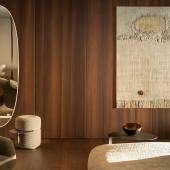Delfina Design signs the interior of Villa Romboli
The historic Art Nouveau residence overlooking the port of Marina di Pisa has recently undergone a major renovation, in agreement with the Superintendence.
After over 100 years, Villa Romboli returns to its ancient splendor. The historic Art Nouveau residence has recently undergone a major renovation in accordance with the Superintendence, to preserve its high historical value and safeguard its original structural and decorative elements.
Overlooking Bocca d'Arno, the tourist port of Marina di Pisa, the Villa that welcomed Gabriele D'Annunzio and his muse Eleonora Duse today houses the sales offices and a cafeteria for guests of Marina Development Corporation, a real estate company dedicated to sustainable redevelopment of tourist destinations linked to the major ports of the Mediterranean Sea.
Choral project, the refurbishment was supported by Marina Development Corporation, the restoration of the architecture was followed by Pierattelli Architetture studio, while the interior bears the signature of Delfina Design, a boutique studio based in Dubai and led by the Italian architect Delfina Cortese.
Immersed in an extensive private park, Villa Romboli develops on two levels: the ground floor, with double external views, houses the welcome areas for customers with reception, waiting rooms and a bar which also includes an internal and external lounge. By opening some walls between the different rooms, it was possible to create a unique environment, without visual interruptions, making fluid and natural the passage. On the first floor, instead, the original walls and the distribution of the spatial layout have been maintained, useful for the adaptation of a meeting room, private and co-working offices, and service rooms.
Due to the new intended use of the Villa, the design philosophy, foundation of the entire redevelopment and renovation process, has proposed a new balance between the original elements, the historical-artistic charm of the building to be preserved and the necessary functionality along with the operational characteristics of a contemporary work ambience open to the public. The original floors, the frescoed walls and ceilings, the internal wooden doors have been safeguarded and maintained, as much as possible given to the precarious original conditions. The intervention of interior does not overlap, but approaches with great delicacy and respect.
Delfina Design worked without overloading the envelope with details, the interior is balanced and reduced to minimal signs: the original structure is the protagonist that dialogues with the context and visitors. According to this philosophy, some parts of the flooring replicate the historical ones, with cement tiles in classic hexagonal and rhomboidal formats of contemporary workmanship; the lighting is resolved with wall elements to preserve the frescoed vaults or with step light points - rather than on the wall - for the central staircase, and with floor-to-ceiling track systems to emphasize the architectural details without resorting to masonry work. Freestanding panels with customized clay coating and abstract decorative pattern blend seamlessly with the existing frescoes, and creating functional systems, useful for arranging screens or shelves. The same covering enriches also the sliding doors dividing the rooms on the ground floor without separating them, while on the first level the choice fell on hinged doors with a minimal geometric pattern, inspired by the decorations of the vaults, in perfect continuity. The interior by Delfina Design, result not only of the hosting shell, but also of the surrounding context, graft with elegant and controlled influences that help to generate the overall mood by enriching the rooms with precious details.
The reception counter, paired with the bar island, offers a clear example: carved from a single block of travertine, weighing 2.8 tons, it becomes the focal center of the space.
Based on the original project of the architect Delfina Cortese, the stone is shaped to fit perfectly into the layout, maintaining a rough side that recalls its twin counter dedicated to the preparation and presentation of cocktails and aperitifs in the bar area. Two imposing stone sculptures that preserve their individuality while simultaneously blending with the surroundings. Even the cafeteria counter, made up of two independent blocks placed side by side, functional to preparation and service activities, qualifies the entire setting enriched exclusively by the essential, linear structure of a system of rail shelves, located next to the walls backdrop.
Light-toned armchairs and walnut wood coffee tables complete the interior, recalling the wooden details of the travertine blocks and the furnishing accessories chosen for the lounge.
Walnut wood and natural stone, combined with clay finishes, thus become the common thread that unifies the different environments, and defines the contemporary, sophisticated choice of the interior. The facilities, present on both floors, play on clear and geometric volumes, featuring the local Grigio di Pisa stone matched with clay-clad panelling. The pantry room on the first and second levels replicates the use of local stone on the floor, and of important full-height wardrobes in walnut wood. On the second floor, the large meeting table and the office desks are proposed in the same wooden essence, for a perfect consonance of materials, shades and style.
“Villa Romboli is a stratified project, of the past that evolves, remaining faithful to itself, and meets the future” comments Delfina Cortese, founder of Delfina Design, who continues, “The history of the Villa, the high historical-artistic value, the richness of finishes and architectural details accommodate the new intended use, the transformation from a residential to a public place and the necessary structural modifications for office use. My interior intends to underline precisely this duality of souls and eras, and the concrete possibility that they coexist in harmony without minimizing the historical legacy nor affecting the functionality and positioning of the new owner”.
Ph Andrea Martiradonna

